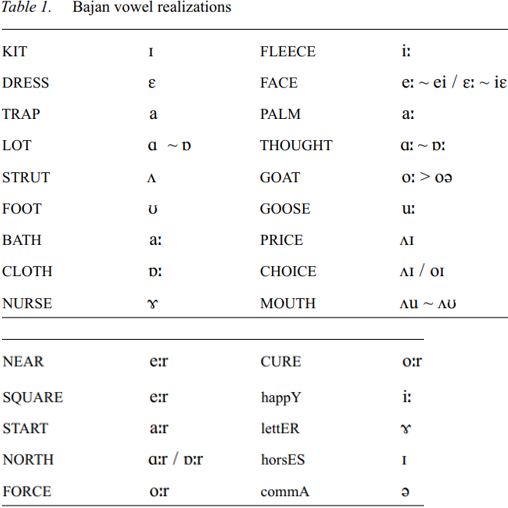

Grammar


Tenses


Present

Present Simple

Present Continuous

Present Perfect

Present Perfect Continuous


Past

Past Simple

Past Continuous

Past Perfect

Past Perfect Continuous


Future

Future Simple

Future Continuous

Future Perfect

Future Perfect Continuous


Parts Of Speech


Nouns

Countable and uncountable nouns

Verbal nouns

Singular and Plural nouns

Proper nouns

Nouns gender

Nouns definition

Concrete nouns

Abstract nouns

Common nouns

Collective nouns

Definition Of Nouns

Animate and Inanimate nouns

Nouns


Verbs

Stative and dynamic verbs

Finite and nonfinite verbs

To be verbs

Transitive and intransitive verbs

Auxiliary verbs

Modal verbs

Regular and irregular verbs

Action verbs

Verbs


Adverbs

Relative adverbs

Interrogative adverbs

Adverbs of time

Adverbs of place

Adverbs of reason

Adverbs of quantity

Adverbs of manner

Adverbs of frequency

Adverbs of affirmation

Adverbs


Adjectives

Quantitative adjective

Proper adjective

Possessive adjective

Numeral adjective

Interrogative adjective

Distributive adjective

Descriptive adjective

Demonstrative adjective


Pronouns

Subject pronoun

Relative pronoun

Reflexive pronoun

Reciprocal pronoun

Possessive pronoun

Personal pronoun

Interrogative pronoun

Indefinite pronoun

Emphatic pronoun

Distributive pronoun

Demonstrative pronoun

Pronouns


Pre Position


Preposition by function

Time preposition

Reason preposition

Possession preposition

Place preposition

Phrases preposition

Origin preposition

Measure preposition

Direction preposition

Contrast preposition

Agent preposition


Preposition by construction

Simple preposition

Phrase preposition

Double preposition

Compound preposition

prepositions


Conjunctions

Subordinating conjunction

Correlative conjunction

Coordinating conjunction

Conjunctive adverbs

conjunctions


Interjections

Express calling interjection

Phrases

Sentences


Grammar Rules

Passive and Active

Preference

Requests and offers

wishes

Be used to

Some and any

Could have done

Describing people

Giving advices

Possession

Comparative and superlative

Giving Reason

Making Suggestions

Apologizing

Forming questions

Since and for

Directions

Obligation

Adverbials

invitation

Articles

Imaginary condition

Zero conditional

First conditional

Second conditional

Third conditional

Reported speech

Demonstratives

Determiners


Linguistics

Phonetics

Phonology

Linguistics fields

Syntax

Morphology

Semantics

pragmatics

History

Writing

Grammar

Phonetics and Phonology

Semiotics


Reading Comprehension

Elementary

Intermediate

Advanced


Teaching Methods

Teaching Strategies

Assessment
Phonological system
المؤلف:
Renée Blake
المصدر:
A Handbook Of Varieties Of English Phonology
الجزء والصفحة:
503-29
2024-04-12
1433
Phonological system
Although Bajan is most distinguished by its phonology, there has been little research on its phonological system, most likely due to the nature of the inquiries surrounding the linguistic origins of the language. Most notably, Wells (1982) provides an essential phonological inventory of Bajan, and Haynes (1973) correlates the degree of use of several stigmatized phonological features with individuals’ ethnic identity, education and geographical location on the island. Researchers and locals note that language varies by parish, but this is largely impressionistic. Generally, there is agreement that the speech of the most northern parish, St. Lucy, and most eastern parish, St. Philip, (both of which may also be considered rural) are most distinct from the rest of the island. In her research, Haynes’ found a distinct intonation in the northeastern parish of St. Andrew, also referred to as the Scotland District, physically demarcated from the rest of the flat island by its “hilly” character. That dialect differences exist can be attributed to degree of proximity to urban centers, and the ramifications stemming from this (e.g., education, industry).
The phonological inventory of Bajan has much in common with the other CECs. Together it stands in contrast to other varieties of English, particularly in terms of vowel quality (primarily with respect to its diphthongs) and prosody. Unlike RP and General American, the mid [e:] and low [o:] vowels in FACE and GOAT generally have not undergone Long Mid Diphthonging in the Caribbean English Creoles. Whereas in RP and General American, the long vowels have diphthongal allophones, in the CECs, the long vowels tend to remain pure. The CECs also tend to have unreduced vowels in unstressed syllables instead of the reduced [ə] typifying other varieties of English. This contributes to the perception of these creoles as syllable-timed, as opposed to stress-timed languages, and conveys a rhythmic quality. Finally, the intonation of the CECs tends to utilize a broad pitch range. For example, more than other varieties of English, these languages employ rising intonation at the end of clauses to indicate a question. Table 1 summarizes the distinctive vowel realization of Bajan.

 الاكثر قراءة في Phonology
الاكثر قراءة في Phonology
 اخر الاخبار
اخر الاخبار
اخبار العتبة العباسية المقدسة

الآخبار الصحية















 قسم الشؤون الفكرية يصدر كتاباً يوثق تاريخ السدانة في العتبة العباسية المقدسة
قسم الشؤون الفكرية يصدر كتاباً يوثق تاريخ السدانة في العتبة العباسية المقدسة "المهمة".. إصدار قصصي يوثّق القصص الفائزة في مسابقة فتوى الدفاع المقدسة للقصة القصيرة
"المهمة".. إصدار قصصي يوثّق القصص الفائزة في مسابقة فتوى الدفاع المقدسة للقصة القصيرة (نوافذ).. إصدار أدبي يوثق القصص الفائزة في مسابقة الإمام العسكري (عليه السلام)
(نوافذ).. إصدار أدبي يوثق القصص الفائزة في مسابقة الإمام العسكري (عليه السلام)


















